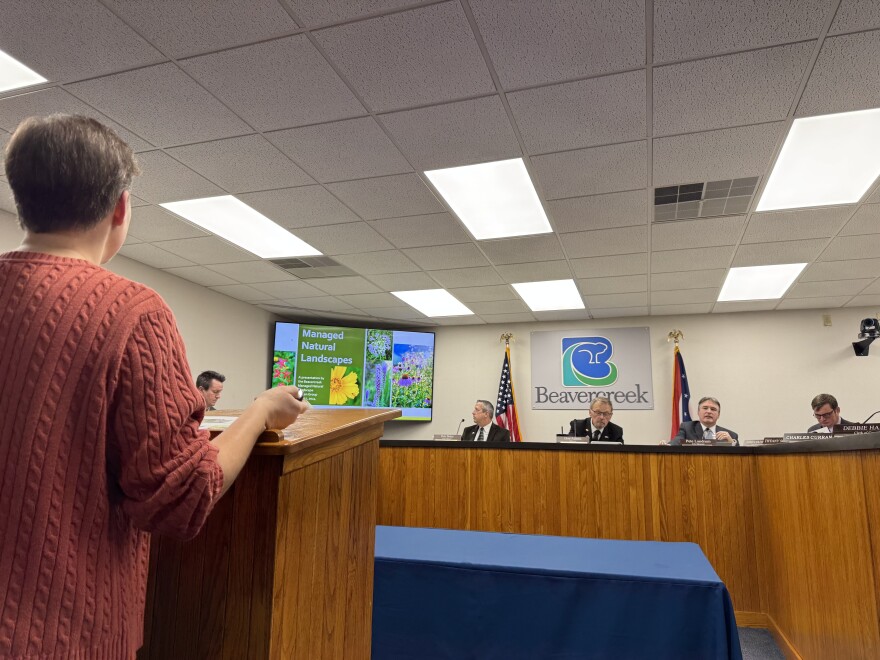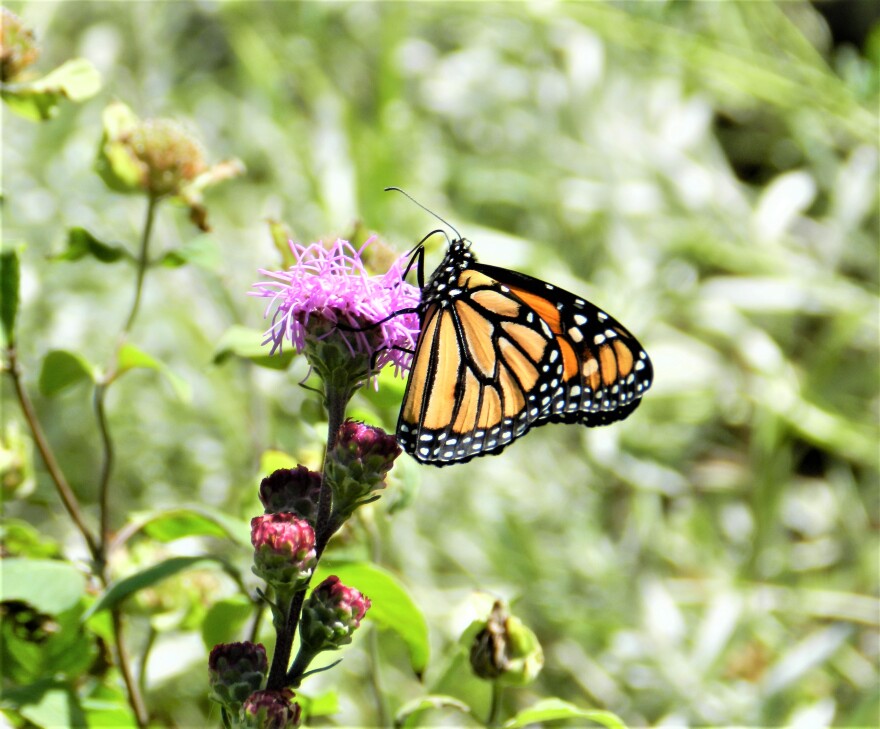A small group of Beavercreek residents are urging the city to rewrite its regulations around lawn care. That’s after a few received warnings about so-called weeds.
The residents' argument? They’re helping the environment with their native plant lawns.
WYSO’s environment reporter Adriana Martinez-Smiley spent the last few months speaking with residents, officials and environmental experts to learn what’s spurring this change.
Current weeds, grass ordinance used to cite residents’ properties
At a January city council meeting in Beavercreek, council members swiftly moved through each agenda item. Then they get to the public comment section.

Several residents lined up to talk about one issue: the language in the city’s weeds ordinance. These residents included Beavercreek High School junior Frida Lozano.
“If there's one thing that I want to continue to remember for the rest of my life, it's the monarch butterfly. And one of the only reasons that I know what the monarch butterfly looks like and its caterpillars, is because of (our) native yard and the plants that are in it,” Lozano said.
Lozano is the daughter of Patricia Lozano and Steve Rowe. To their surprise, the two were cited for their property back in July 2024.
The Lozano and Rowe family are a part of a growing movement across the country to replace part or all of traditional grass lawns with native plants friendly to pollinator insects. As part of this movement, a small group of Beavercreek residents are looking to work with the city to update its weeds ordinance to accommodate native plant lawns.
The two were told their plants went above the 10 inch height limit, and that the vegetation they had planted didn’t qualify as lawn under the ordinance. The case wasn’t withdrawn until they contacted a lawyer, according to Patricia Lozano.
“We felt very comfortable (that) what we were doing was not in violation of the regulations,” Patricia Lozano said.
Native plant yards are residents’ way of preserving environment
Officials and residents have had multiple discussions concerning this issue. Beavercreek’s planning and development director Randy Burkett said they’re working to reach a resolution.
“Our end goal is to come up with concise, clear language on what people can and can't do. We're not anti-pollinators and we understand the pros and cons,” Burkett said.
Mary Beth Sweetland said she also hired a lawyer when she was approached by the city in 2023 for her plants. She was adamant about keeping her native plant lawn intact.
“There has to be some room for the other creatures of the earth to have a place to live and we have poisoned them out of existence. We pushed them out of existence,” Sweetland said.
The city of Beavercreek will hold a first reading of its revised weeds ordinance on Feb. 24, according to officials.
The goal is to pass a new ordinance before this year’s growing season.
Lawns on the front line of change
Since the 1970s, Cornell University researchers estimate North America has lost 3 billion birds. And a study from the Somerset Wildlife Trust found more than half of the world’s insect population has been lost since then too.
A key contributor to these declines is habitat loss.
This is especially true for caterpillars, which often can only eat one or a few plant species. Those insects serve as pollinators for 90% of our plant species and a food source for 96% of U.S. land bird species.
That’s why the U.S. Fish and Wildlife Service recently proposed listing the monarch butterfly as threatened and encouraged people to aid in its recovery.

Movement to embrace native plant lawns
Doug Tallamy, an entomologist and author, helped popularize planting native plant habitats in yards through his books “Bringing Nature Home” and “Nature’s Best Hope.”
Turf grass makes up roughly 50 million acres of land in the United States — larger than the size of New England. Dedicating even just half of this area to native plant habitat can make all the difference, Tallamy said.
“It's not optional that we do that. If we continue to kill the nature that supports us, we're doomed. I mean, it sounds dramatic and desperate, but that's the situation,” he said.
Other communities find solutions
Communities across the country have moved to include language in their municipal ordinances that are more friendly to native plant landscapes. That includes Yellow Springs.
Former Yellow Springs environmental commission member Nadia Malarkey says in 2021, they created a section in the village’s code dedicated to managed natural landscapes – a term used to describe native plant lawns.
Malarkey said it can take time to get behind the idea, but education is key.
“It's really important to be able to share with the powers that be as to why these landscapes are vitally important in this day and age and the impact that it has on the environment, our mental health, the health of our children, our pets, and the ecosystem of which we are a part of,” Malarkey said.
Keep up with all of WYSO's local coverage and sign up for our morning newsletter.



